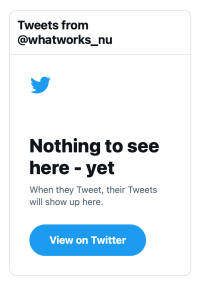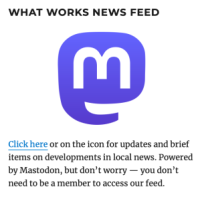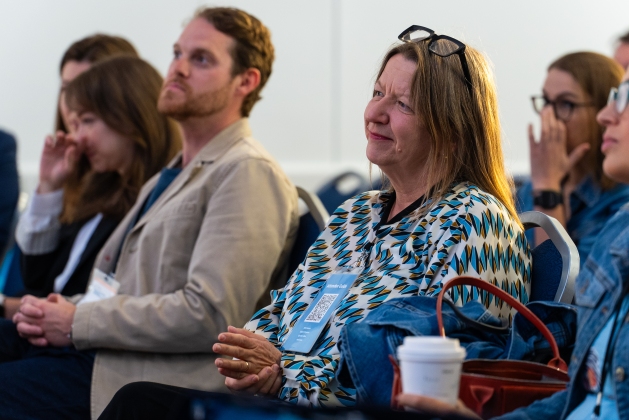
Mathewson Farm in Johnston, R.I. Photo (cc) by John Phelan.
When we think about revenue sources for local news, we tend to focus on the obvious — ads, subscriptions, events and, for nonprofits, voluntary memberships and grants. What we often overlook are public notices, also known as legal ads, taken out by government entities to inform the public that a job is being put out to bid or a meeting is being held. Mandatory public notices also include foreclosures, the disposition of public property and other business.
Public notices represent a significant source of revenue for community news organizations — and they can be weaponized. The Boston Globe recently reported on one such example in Rhode Island. Amanda Milkovits wrote that the city of Johnston has removed public notices from the weekly Johnston Sun Rise and moved them instead to the daily Providence Journal, even though the Journal charges much higher fees and is read by few people in Johnston.
The mayor, Joseph Polisena Jr., told Milkovits that he wanted public notices to reach a broader audience, especially to let construction companies know about bids. But the city has also been at odds with the Sun Rise and its editor/reporter, Rory Schuler. Publisher John Howell was quoted as saying that Polisena once told him, “I’m not going to support somebody who is working against me,” and that the mayor said he wouldn’t advertise as long as Schuler was with the paper. (Polisena denied the charges.)
Please consider becoming a supporter of this free source of news and commentary for $5 a month. Just click here.
The loss of city public notices is costing the Sun Rise some $12,000 a year. Justin Silverman, executive director of the New England First Amendment Coalition, told the Globe that the city might be violating the First Amendment if it could be shown that Polisena’s actions were retaliation for negative coverage.
What’s happening in Rhode Island is hardly unusual. In Florida, Gov. Ron DeSantis pushed a bill through the legislature that allows local governments simply to post public notices on their own websites — a cost-saving measure that also has the effect of making legal ads less visible. DeSantis’ disdain for the news media is well-known.
Colorado College journalism professor Corey Hutchins often tracks fights over public notices in his newsletter, Inside the News in Colorado. Recently he reported on a move by city officials in Aspen to designate the Aspen Daily News, which is locally owned, as the city’s “newspaper of record” over The Aspen Times, a daily owned by the Ogden chain, based in Wheeling, West Virginia. That peculiarity of Colorado law carries with it some major implications. Hutchins writes:
Newspapers that earn a city’s “of record” stamp means they are the ones a city pays to place legal notices and advertising. State law requires governments to publish certain things in local newspapers in order to keep residents abreast of public business. Being a city’s paper of record also can give a newspaper a sense of gravitas in a community.
In other words, more money for the Daily News, less for the Times, which became embroiled earlier this year in a dispute with county officials who were unhappy with the Times’ coverage of a billionaire’s development plans. (Hutchins does not claim there is a link between the county and city actions.)
According to Susan Chandler, writing for the Local News Initiative, such battles are under way across the country, with increasing pressure to move public notices from news outlets to government websites. Richard Karpel, executive director of the Public Notice Resource Center, told Chandler that these initiatives are part of Republican attacks on journalism, saying:
I don’t think the concept of legal notices is controversial. There needs to be a nonpartisan way to officially announce what the government is doing. What’s controversial is how it happens. We’ve seen it become more of a partisan issue in the last five or 10 years. In some states, there are Republicans who are in battle with the media as part of their political strategy. To that extent, it has become partisan.
In Massachusetts, change may be afoot as well. Currently, state law requires that public notices be placed in print newspapers, which has become increasingly difficult as the Gannett chain has closed and merged many of its weekly papers. A number of communities are being well served by nonprofit startups, but those tend to be digital-only. State legislators are considering ways to amend the law to allow public notices to be placed in web publications, especially in communities where there is no viable print paper.
I’ve consulted with state Rep. Ken Gordon, whose district includes Bedford, the home of a vibrant digital publication, The Bedford Citizen, but no print newspaper since Gannett closed the Bedford Minuteman about a year and a half ago. The town now publishes its public notices in The Sun of Lowell, which has virtually no presence in Bedford. Also of note: On the “What Works” podcast, Ellen Clegg and I interviewed Ed Miller, editor of the startup Provincetown Independent, a print and digital publication. Miller argues that the print requirement for public notices is essential, at least in places that still have a print newspaper.
Public notices aren’t sexy. It’s much more satisfying to talk about a local news outlet that has built a successful events business or has found a way to boost digital subscriptions. But they are essential. Not only do they provide as much as 20% to 25% of a small local newspaper’s revenues, but they an important part of accountability. Public notices on a government website can be hidden away or even changed. Since Colonial times, public notices have helped local journalism thrive and have kept citizens informed. The laws governing public notices need to be updated — but not overturned.
Leave a comment | Read comments



 The Phoenix was not the city’s last alt-weekly. For nearly a decade after the Phoenix shut down in 2013, DigBoston continued on with a mix of news and arts coverage. Unfortunately, the Dig, which struggled mightily during COVID, finally ended its run earlier this year. But Dig editors Chris Faraone and Jason Pramas are now morphing the paper into something else —
The Phoenix was not the city’s last alt-weekly. For nearly a decade after the Phoenix shut down in 2013, DigBoston continued on with a mix of news and arts coverage. Unfortunately, the Dig, which struggled mightily during COVID, finally ended its run earlier this year. But Dig editors Chris Faraone and Jason Pramas are now morphing the paper into something else —  Mark Pothier, a top editor at The Boston Globe, is leaving the paper to become the
Mark Pothier, a top editor at The Boston Globe, is leaving the paper to become the 







